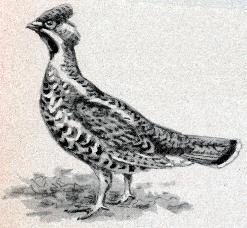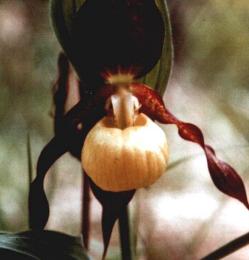Sahelo-Saharan Antelopes: Conservation and restoration programme for six ungulates of arid and semi-arid habitats of northern Africa, established within the framework of the Concerted Actions in favour of Appendix I species of the Convention on Migratory Species (CMS, Bonn Convention). The species concerned, the Scimitar Oryx, Oryx dammah, the Addax, Addax nasomaculatus, the Dama Gazelle, Gazella dama, Cuvier's Gazelle, Gazella cuvieri, the Rhim or Sand Gazelle, Gazella leptoceros, the Dorcas Gazelle, Gazella dorcas, are threatened to critically endangered and represent the most significant surviving element of the North African large mammalian fauna. This fauna, which has suffered from long exposure to the combined effects of human pressure and climate deterioration, is the most threatened of any such fauna on a continental land mass. Other flagship species that have been lost north of the deserts, and whose restoration is considered in other programmes, or might be considered in further developments of this one, include the Red Hartebeest, Alcelaphus buselaphus, the African Elephant, Loxodonta africana, the Atlas Lion, Panthera leo. With financial support offered by the Conference of the Parties of the Convention for Migratory Species at the suggestion of its Scientific Council, reports on the state of conservation of the six ungulates were compiled in 1997-1998 by staff and collaborators of the Royal Belgian Institute of Natural Sciences, and an Action Plan was drafted. These documents were discussed with the representatives of 14 Range States at a regional seminar, organized by the Tunisian authorities, the Secretariat of the Bonn Convention and the Institute, and held in Tunisia in February, 1998 (CMS Technical Series Publication 3). The conference formally adopted the Action Plan. In 1999, Action Plan and Status Reports were published by the Convention for Migratory Species (CMS Technical Series Publication 4) and presented to its Scientific Council and its Conference of the Parties. The programme has now entered, with continued support by the Conference of the Parties, a phase of implementation of the Action Plan, with the preparation of medium-sized local or regional projects. One of these, centred on the central-western parts of the range, has been approved for financial support by the Fond Français pour l'Environnement Mondial (FFEM). Its instruction phase has begun and is scheduled to be completed before the end of 2001
Project Description ---- Action Plan ---- Status Reports ---- Publications ---- Documents.


Slender-billed Curlew: The Slender-billed Curlew, Numenius tenuirostris, is the most threatened Palaearctic migratory bird species. It breeds in an unknown region of Siberia and migrates to winter quarters that are, or were, mostly situated within the Mediterranean basin and adjacent regions of North Africa and the Near East. The Royal Belgian Institute of Natural Sciences has participated in a number of European Union projects undertaken as contributions to a Concerted Action of the Convention for Migratory Species. In recent years, these projects, supported by LIFE Nature; have concentrated on the monitoring and management of potential stopover areas in Greece. The main results have included an improvement of the status of conservation of six wetlands, the training of local teams integrating professional and amateur ornithologists, hunters and wildlife managers, and a better understanding of the use of the wetlands by migratory wader species. Further developments are planned for the near future with a continuation of the string of projects. In parallel, research is conducted, with the support of the Belgian National Lottery, in techniques of satellite telemetry, as the only method presently available with a potential to locate and preserve or restore the breeding grounds of the species for which no nests have ever been found outside of the few discovered in Central Siberia in the period
Project Description ---- Publications ---- Documents

Monk Seal: The Mediterranean Monk Seal, Monachus monachus, is among the most endangered mammals in the world. It occurs in the Mediterranean Sea, in the Black Sea, on the Atlantic coast of northwest Africa and in the Madeiran archipelago. The range of the species has undergone a constant regression and fragmentation throughout the 20th century, in parallel with a reduction of numbers. The decline became extremely rapid and severe after 1960. The Commission of the European Communities initiated, in the late 1970's, the 1980's and the 1990's, a number of projects aimed at slowing and reversing these catastrophic trends. The Institute participated, in close cooperation with, in particular, the Sea Mammal Research Unit and a number of Greek, French, Italian and Portuguese institutions, in several of those programmes, concentrating mostly on monitoring of numbers and range, automatic recording of individuals, establishment of databases and the preparation of conservation strategies.
Publications ---- Documents

Hazel Hen: The Hazel Hen, Bonasa bonasia, is represented in the Hercynian regions of northwestern Europe by highly threatened populations of singular ecological requirements, in particular, a dependence on deciduous forests and specific habitats or microhabitats within them. The Conservation Biology Team of the Royal Belgian Institute of Natural Sciences conducted, in cooperation with Liège University, Louvain University, the Roi Baudouin Foundation and the Commission of European Communities, a number of analyses, mostly at the end of the 1970's, in the 1980's and in the early 1990's, as a contribution to forestry efforts to preserve or restore the species. The results were largely incorporated in publications of the Institute, but a portion is only available in the form of reports to the Roi Baudouin Foundation, the Commission of the European Communities and the Walloon Region.
Publications ---- Documents.

European Lady's Slipper Orchid: The European Lady's Slipper Orchid, Cypripedium calceolus, one of the largezt and most spectacular elements of the European flora, is a rare species in most of its range, both in number of stations and number of individuals, a condition generally indicative of high extinction probability. It does indeed display almost all the characteristics known for extinction propensity of demes: most of its populations are numerically small, it lacks resistant life stages, its breeding season is brief and highly susceptible to environmental vagaries, its immigration and colonization potential is low and it is subjected to strong interspecific competition. An action plan, proposing global conservation measures to face the threats to this flagship species of European flora, was developed in 1998-1999, within the framework of the Convention on the Conservation of European Wildlife and Natural Habitats (the Bern Convention). It is published by the Council of Europe (Nature and Environment, N°. 100) and available from Council of Europe Publishing, Strasbourg.
Publications ---- Documents
